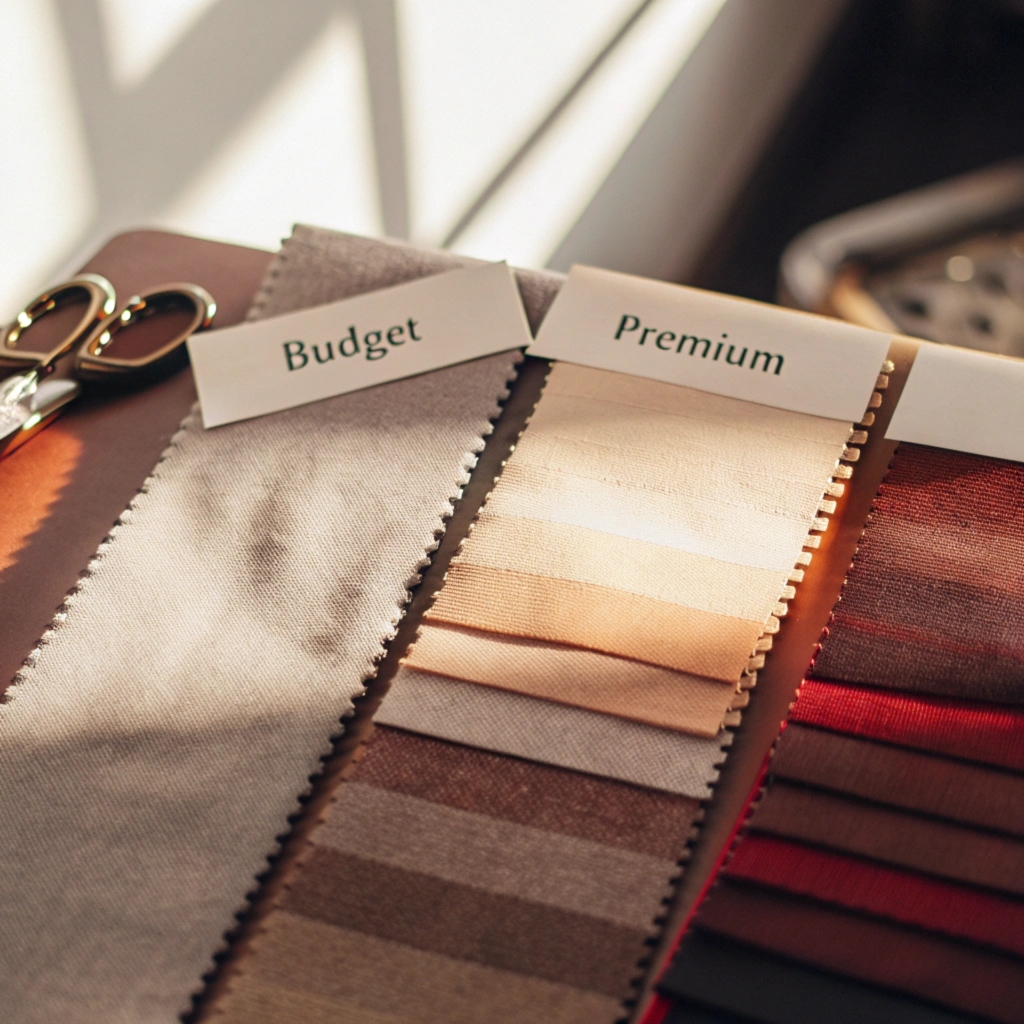Creating a shirt involves various factors that influence the overall cost. These factors include fabric, labor, logistics, and the manufacturing location. Let’s break it down to understand better.
The cost for a manufacturer to make a shirt typically ranges between $5 to $20, depending on materials, labor, and production scale. Understand factors influencing shirt manufacturing costs1
This broad range is influenced by fabric quality, production location, and minimum order requirements. Now, let’s dive deeper into what drives these costs.
How much does it cost a company to make a shirt?
The cost of producing a shirt varies significantly depending on the company’s operations and the shirt’s intended market.
A company making a shirt incurs costs ranging from $5 for basic tees to $30 or more for premium styles.

Factors Affecting Shirt Manufacturing Costs
Several components shape the manufacturing cost of a shirt. Below are the primary contributors:
1. Fabric Costs
Fabric type and quality play a pivotal role. For example:
- Cotton: $1–$3 per yard for basic weaves; $5–$15 for premium organic cotton.
- Polyester: Typically cheaper, around $1–$2 per yard.
- Blends: Polyester-cotton or other blends range between $2 and $5 per yard.
| Fabric Type | Cost Per Yard | Use Cases |
|---|---|---|
| Basic Cotton | $1–$3 | Casual tees, budget apparel |
| Premium Cotton | $5–$15 | High-end fashion, luxury shirts |
| Polyester | $1–$2 | Sportswear, affordable garments |
2. Labor Costs
Labor costs depend on where the shirt is made:
- China, Bangladesh, Vietnam: $1–$3 per shirt for labor.
- USA or Western Europe: $8–$20 per shirt for labor.
Compare US and offshore clothing production costs2
3. Production Scale
Large-scale manufacturing reduces per-shirt costs significantly. Producing 10,000 units may drop prices by 20–30% compared to 1,000 units.
4. Add-ons and Customization
Customization like logos, embroidery, or specialized printing adds $2–$10 per shirt.
How much does it cost to manufacture clothing in the US?
Producing clothing in the US offers higher quality assurance but comes with elevated costs.
Manufacturing clothing in the US costs $15 to $30 per shirt, driven by high labor and operational expenses.
US Manufacturing vs. Offshore Options
Labor Costs
In the US, minimum wages vary by state but are substantially higher than in Asia:
- California: $15/hour minimum wage.
- Bangladesh: Less than $1/hour for garment workers.
Equipment and Compliance
Factories in the US must comply with stringent safety and environmental standards, adding to costs:
- OSHA Compliance: $5,000–$20,000 annually for certifications.
- Environmental Practices: Implementing eco-friendly solutions increases costs but appeals to sustainable brands.
Transportation and Lead Time
Producing locally reduces shipping times, allowing companies to restock efficiently and respond to market demand faster. Offshore production, however, benefits from lower costs despite longer lead times.

How much does it cost to create a clothing brand?
Launching a clothing brand is a multi-step process with varying costs depending on branding goals and product lines.
Creating a clothing brand typically requires $10,000 to $50,000, factoring in product development, marketing, and initial production. Learn about steps to create a clothing brand3
Steps and Costs to Start a Clothing Brand
1. Initial Design and Prototyping
Hiring a designer for sketches and samples can cost $500 to $5,000. Prototyping each design adds $50 to $500 per sample.
2. Manufacturing Costs
Depending on the scale, initial production orders might require a minimum of 100–500 units per design:
- Small Batch (100 units): $10–$15 per shirt.
- Large Batch (500+ units): $5–$10 per shirt.
3. Marketing and Branding
To establish a brand identity, you’ll need:
- Logo Design: $100–$1,000.
- E-Commerce Website: $500–$5,000.
- Advertising Budget: $1,000–$10,000 for digital campaigns.
4. Distribution and Logistics
Managing inventory and shipping adds 10–20% to total costs. Partnering with a fulfillment center may streamline this.
Example Budget for a Start-Up Brand:
| Category | Estimated Cost |
|---|---|
| Design and Sampling | $1,000–$3,000 |
| Manufacturing | $3,000–$10,000 |
| Marketing and Branding | $2,000–$10,000 |
| Logistics | $1,000–$2,000 |
What are the carbon costs to making a shirt?
Shirt production also impacts the environment, and brands are increasingly focused on reducing their carbon footprint.
Producing one shirt emits an average of 2.1 kg of CO₂, depending on the fabric and manufacturing process. Learn about the carbon footprint of shirt production4
Breaking Down the Carbon Impact
Fabric Production
- Cotton: Requires significant water and pesticide use, producing 1.8 kg CO₂ per shirt.
- Polyester: More energy-intensive, emitting 5.5 kg CO₂ per kg of fabric.
Transportation
Shipping raw materials and finished products adds 0.5–1.5 kg CO₂ per shirt, depending on distance.
Energy Usage
Factories relying on non-renewable energy sources increase emissions. A switch to renewable energy could reduce this by 30%.
Sustainability Measures
To reduce carbon costs, brands can:
- Source organic or recycled fabrics.
- Implement energy-efficient machinery in factories.
- Optimize shipping routes to minimize emissions.
| Environmental Initiative | Carbon Reduction Potential |
|---|---|
| Use of Organic Cotton | 50% less water and energy |
| Solar-Powered Factory Equipment | Up to 30% CO₂ reduction |
| Localized Production | 20–40% lower transportation impact |

Conclusion
Manufacturing a shirt is a complex process influenced by material, labor, and scale, with costs varying from $5 to $30 per unit. Factors like location and sustainability play critical roles, and while US manufacturing offers premium quality, offshore options are more cost-effective. Understanding these dynamics is key for both manufacturers and brands to optimize costs and deliver quality.
Footnotes
-
Gain a detailed understanding of what drives the cost of making a shirt. ↩
-
Learn the differences in labor and operational costs between US and offshore production. ↩
-
Discover the essential steps and budget considerations for starting a clothing brand. ↩
-
Explore the environmental impact of shirt production and ways to reduce it. ↩













